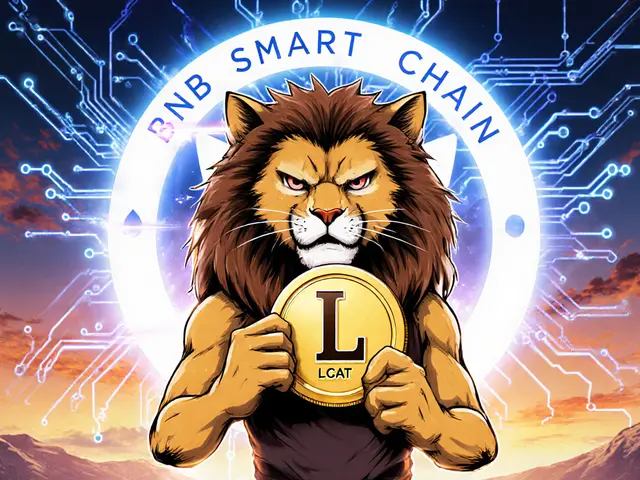ERC-20 Token Standard: What It Is and Why It Matters
When working with ERC-20, a set of rules that define how tokens behave on the Ethereum blockchain. Also known as Ethereum token standard, it enables developers to create interchangeable crypto assets that can be transferred, approved, and queried uniformly. Ethereum, the decentralized platform that hosts ERC-20 contracts provides the execution environment, while smart contracts, self‑executing code that enforces the ERC-20 rules act as the backbone. In other words, ERC-20 encompasses token standards, requires smart contracts to run, and lives on Ethereum. This trio forms the foundation for most of today’s crypto utility tokens.
How ERC-20 Connects to DeFi, Airdrops, and Other Crypto Tools
Because ERC-20 tokens are universally recognized, they become the default choice for DeFi tokens, assets used in lending, yield farming, and decentralized exchanges. Projects like liquidity providers, staking platforms, and synthetic assets all rely on the same interface, making integration smooth and reducing development overhead. The same standard also drives airdrop campaigns, marketing events that distribute free ERC-20 tokens to attract users. When a new token launches, the airdrop logic simply calls the standard transfer functions, allowing thousands of wallets to receive tokens in one transaction batch. This ease of distribution explains why you’ll see a steady stream of ERC-20 airdrops in our article list, from gaming tokens to utility coins. Beyond DeFi and airdrops, ERC-20 tokens interact with tools like DEX aggregators, token listing trackers, and blockchain explorers. A DEX aggregator pulls price data from multiple exchanges, but it can only trade assets that conform to the ERC-20 interface, ensuring consistency across the ecosystem. Token listing platforms compare market caps, trading volumes, and liquidity for ERC-20 coins, giving users a reliable way to spot opportunities. Together, these tools illustrate how ERC-20 influences almost every layer of the crypto stack.
Understanding the ERC-20 standard also means knowing its limits. Because the original specification lacks features like pausing, burning, or upgradeability, many projects extend it with additional functions (often called ERC-20 extensions). Developers must audit contracts carefully to avoid common pitfalls such as the “approval race condition” or integer overflow bugs. For anyone looking to create or interact with an ERC-20 token, the best practice is to use audited libraries—OpenZeppelin, for example—and to test on testnets before going live. Armed with this knowledge, you can evaluate token contracts, participate safely in airdrops, and leverage DeFi services without stumbling over hidden risks. Below you’ll find a curated collection of articles that dive deeper into these topics. From mining pool overviews and Merkle‑Patricia tree comparisons to detailed airdrop guides and DeFi token reviews, the posts cover practical steps, security tips, and market analysis—all framed around the ERC-20 ecosystem. Whether you’re a beginner aiming to claim your first airdrop or a seasoned trader scouting the next DeFi opportunity, the resources here will give you a solid footing in the world of ERC-20 tokens.
Learn what Gourmet Galaxy (GUM) crypto coin is, its token specs, market performance, trading venues, risks, and future outlook in this in‑depth guide.
Read MoreLearn what Wrapped AVAX (WAVAX) is, how it works, and why it unlocks DeFi opportunities on Avalanche with ERC-20 compatibility.
Read More






